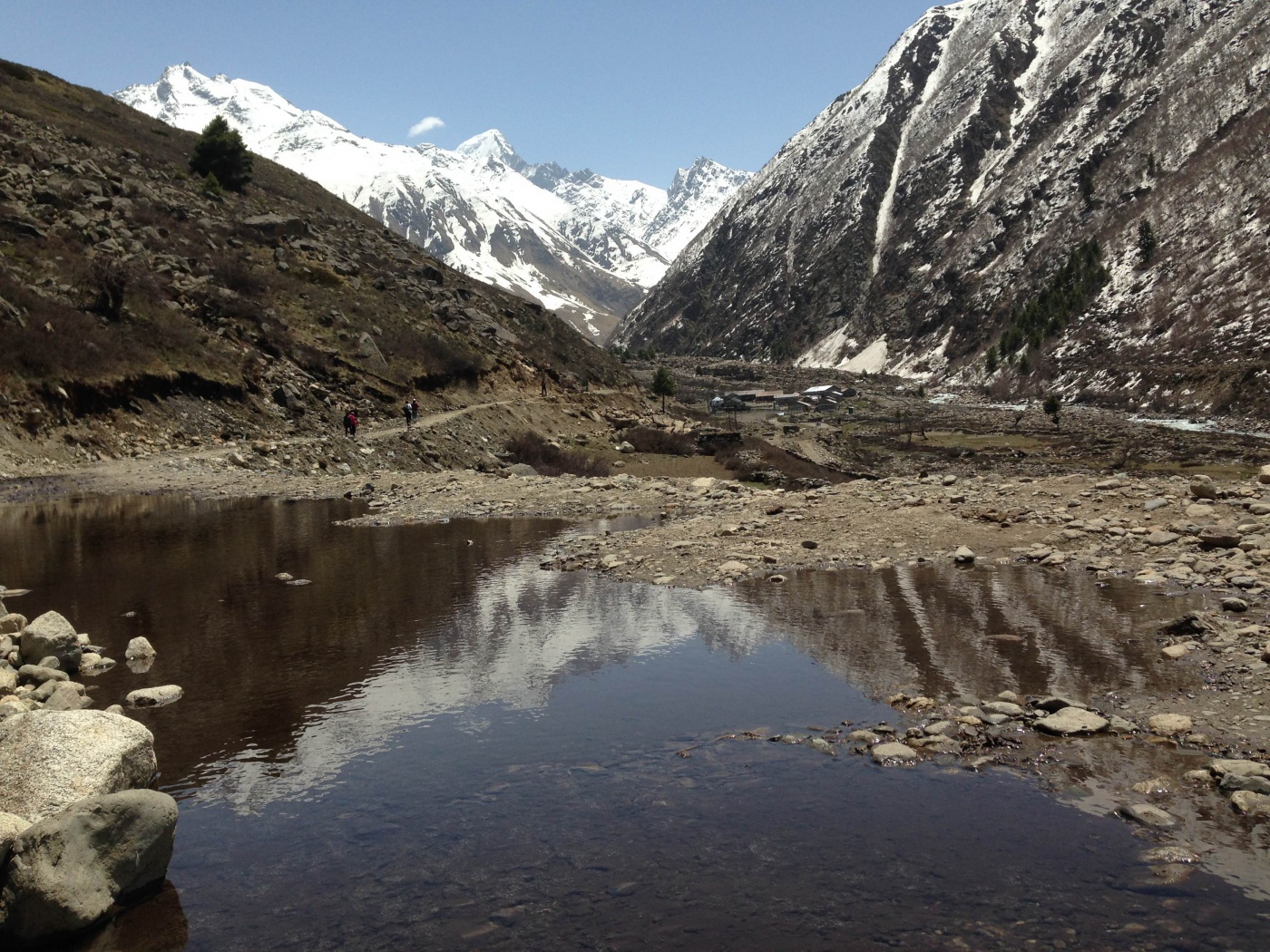
Kinnaur District has a heterogeneous population. Prominent diversity can be witnessed, and people belonging to various ethnicities dwell in the district. Three territorial units have been assigned to categorise the people of the district. People belonging to lower Kinnaur are of Mediterranean physical type.
The majority of people are Hindus, however, influence of Buddhism is also evident. People of middle Kinnaur are of mixed races having Mediterranean as well as Mongoloid features. People of upper Kinnaur have mostly Mongoloid features with a few exceptions. People of the district are mostly artisans or peasants. The cultivating communities are known as Kanets who are further categorised into various sub castes.
The scheduled castes of the district are referred as Domangs and Chamangs who are professionally blacksmiths and weavers respectively. Ore miners are another caste, which is mainly involved in carpentry. People of different localities of the district worship different local deities.
Himachal Pradesh is one of the ideal locations for apple cultivation, especially Kinnaur considering the vast production of apple orchards. The much awaited delicious variety of apples from Himachal Pradesh's Kalpa (Kinnaur district) where horticulture is considered as a major livelihood source, most of all the households are involved in horticulture activity. The major horticulture produce in this area are apples.
Almost 78% of the local people have their own apple garden. Generally, most of garden is situated beside their house. As a result, all family members are involved in apple cultivation.
Apple cultivation is the main source of income of local people. Government of India declared this area as tax-free area, which has also helped to enrich their economic condition.
This program will allow students to explore the culture, belief and environmental concerns surrounding the land of Sangla. The aim is to come together under a common platform and ensure that each one's strengths can be directed towards the realisation of a common goal - sustainable development for the entire Sangla region. The focus will be on:
- Promotion & development of responsible eco-travel in the valley to enable tourism to be profitable for local communities, ecology, culture and travellers alike.
- Initiatives to manage waste and reduce plastic waste generation
- Promotion of local handicrafts
- Cultural and environmental exchange with a host school in Sangla and understand the local way of life
- Understanding of the natural disasters in the region and working on risk reduction initiatives.
Disaster Risk Reduction:
The Himalayan Belt is a zone that is very vulnerable to natural disasters. Not only is the mountain range located at the convergence of two ever-shifting tectonic plates, but the younger age of the mountains just adds to the vulnerability of the region.
Specifically in the Kalpa Valley where Sangla Village is located, there are 6 kinds of disasters that are the most frequent:
1. Landslides
2. Floods
3. Drought
4. Cloud Burst
5. Earthquake
6. Road Accidents (Cite DRR Paper here)
However, despite being a disaster-prone region, the general awareness is poor. Hence, this will be one of the major activities during the trip, wherein the students will join forces with the local children and use interactive activities to help generate awareness in a creative and exploratory manner. Not only will this help the local children learn about these topics, but also show the students that language is not the only medium by which essential information can be communicated.
Garbage Mitigation
There are two major sources of income in Sangla Village. The first is generated from the sale of the apples and by-products, while the second comes from being a tourist destination. The ever increasing flux of tourists comes with one major downside: higher levels of trash are being generated and carelessly disposed of, and the lack of proper waste collection and disposal mechanisms has resulted in garbage just being strewn about. In addition, most of the garbage is of plastic-origin, which takes several years to disintegrate naturally.
There is a dire need of awareness about the damaging consequences of littering both to the environment, as well as the economy generated by tourism. By combining art, culture and science, the students will educate the local students about the kinds of waste, as well as the proper disposal and recycling techniques. To do this, the students will first be taught about these theoretical concepts, in order to give them the confidence to generate awareness within the community where the project will be based.
Environmental Awareness:
In Sangla, large areas of land are being cleared, and with it, the native flora in order to make way for the more lucrative apple orchards. Monoculture farming can have drastic effects on the soil and its fauna. It can change the quality of the soil, and with the apple trees having the same nutritional requirements, this can leach the soil of vital nutrients without giving it the chance to replenish. In addition, it can also contribute to soil erosion as the soil particles loosen up due to this as well.
Taking into account the vulnerability of the region, it is even more important to ensure that the native flora is present at a sufficient level so as to preserve the integrity of the soil. One of the core activities involved in this module is the organization of plantation drives, wherein the students, along with their local counterparts, will plant native species of trees and shrubs. In addition, environmental awareness will also be covered in the disaster risk and reduction module, in the theoretical and practical learning sessions.

